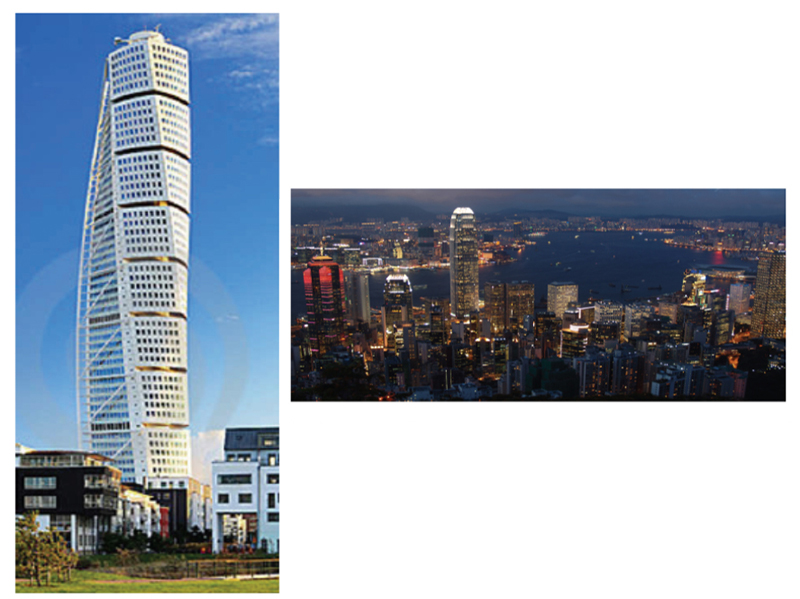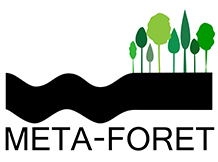Scientific objectives
We believe that if successful, this project will lead to strong physical and geophysical applications, including, for example :
1. Forbidden frequency bands, or ‘bandgaps’, can be exploitable for the cancellation of ambient seismic noise at locations where ground vibrations are an issue, for example for highly sensitive scientific measurements (e.g., local vibration of a large astronomic lens). Similarly, the sub-wavelength focusing that results from an anomalous dispersion curve inside a metamaterial can be exploited to design lenses or waveguides to control and manipulate seismic waves locally.
2. In terms of soil improvement, the project will provide a better understanding of the behaviour of a network of rigid inclusions in soils submitted to an earthquake, and the potential attenuation or dissipation of the seismic loads on the structure. It will come timely to confirm the results of the currently ongoing theoretical studies (3D dynamic modelling with Itasca Consultants) through full-scale field experiments, a necessary step to obtain a Third Party approval of the technique before offering it to Menard clients. If the project is not necessarily expected to have an impact on the design of soil improvement using rigid inclusions, it will however lead to reduce the seismic loads considered to design the above structures, helping to reduce the cost and carbon footprint of construction in seismic regions.
3. In the future, the constant increase of computing power available through national high performance computing infrastructures (e.g. TGCC), will allow us to deal with more complex metamaterial models. However, as explained in WP3, the meshing phase remains a bottleneck for SEM simulations. The automated hexahedra meshing procedure that is used for this project is characterized by an erratic behavior that sometimes leads to malformed element and invalid meshes. Hence, a black box meshing approach is rarely possible. In the long term, we propose to improve the geometry decomposition and meshing approach to ensure that more complex model of seismic metamaterials can be modelled successfully. The main idea is to rely as much as possible on regular meshes and a modular approach for the geometry decomposition. A metamaterial is in most cases a collection of resonators embedded in a homogenous material. Hence we can focus on meshing one resonator with a regular, high quality mesh and then apply, in a iterative way, the same mesh to all of the others. This will guarantee the validity and limit the complexity of the mesh, a typical problem of automated meshing algorithms. The implementation of such a technique would require the creation of a Python class that will be integrated in the meshing software CUBIT.
4. A forest will be the first large scale medium where metamaterial physics will have been demonstrated. However, we can envision this leading onto future studies on an even larger scale ; e.g., some modern cities can be seen as a collection of tall buildings (Fig. 1) that can definitely behave as resonators for low-frequency seismic waves (between 1 and 5 Hz). Following our experimental demonstration with a forest at the geophysics scale, the next fundamental question will be : “Does a city behave as a metamaterial for seismic waves ?”
It is reasonable to imagine that overall coupling at the urban scale may have a complex response that can be characterized as a giant geophysical metamaterial, where a cluster of subwavelength resonators (i.e. buildings) gives rise to a new type of wave propagation physics. Soil-structure coupling at urban scale has been detected at Mexico City after the 1985 Michoacan earthquake, the downtown seismic ground motion showing long duration monochromatic beatings as a result of the building resonance. As a natural extension of the META-FORET project, experimentation at the urban scale led by P. GUEGUEN at ISTerre is planned in Quito (Ecuador) in 2017, deploying a moderate size (40 seismometers) 3D urban array inside buildings and at the ground level. The ambition of this field deployment is to analyze the surface wave field propagating in a complex multi-building environment.
As metamaterials are engineered to allow full control of the wave propagation in designated frequency ranges, it might be possible, in the next ten or twenty years, to define an urban metamaterial based on the urbanization scheme to produce beneficial effects on the response of structures and seismic casualties.

5. One can easily understand that for a markedly enhanced control of Rayleigh wave trajectories over broad range of frequencies, we need to use a more radical approach, which is that of transformational geophysics whereby anisotropy cannot be avoided. One such non-conformal mapping is shown in Fig. 2, where we use a coordinate stretch mapping in a forest (left panel) creating an elliptical exclusion zone in white (middle panel) ; one can see that a forest viewed from the sky is mapped onto a transformed forest with strong anisotropic features. We shall investigate such forests thanks to morphing algorithm in this ANR, having in mind to achieve anti-earthquake protection as suggested by the numerical simulation (right panel).

Updated on 10 octobre 2016


